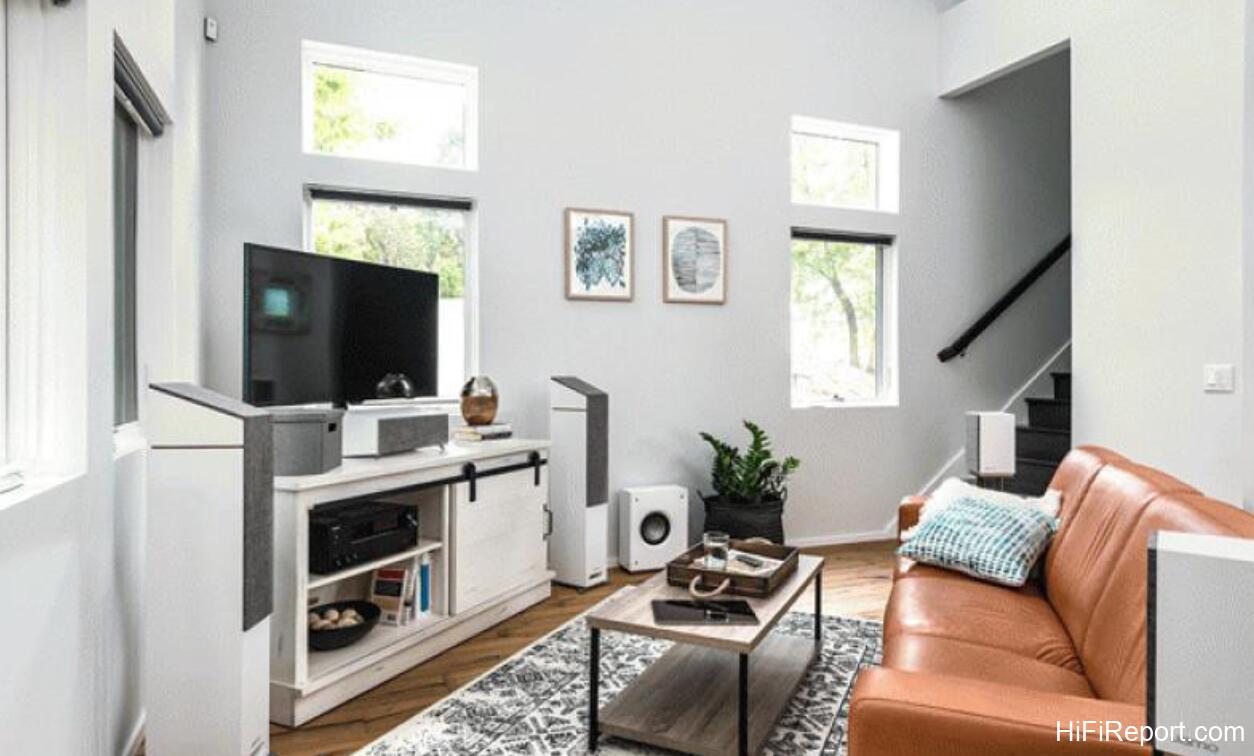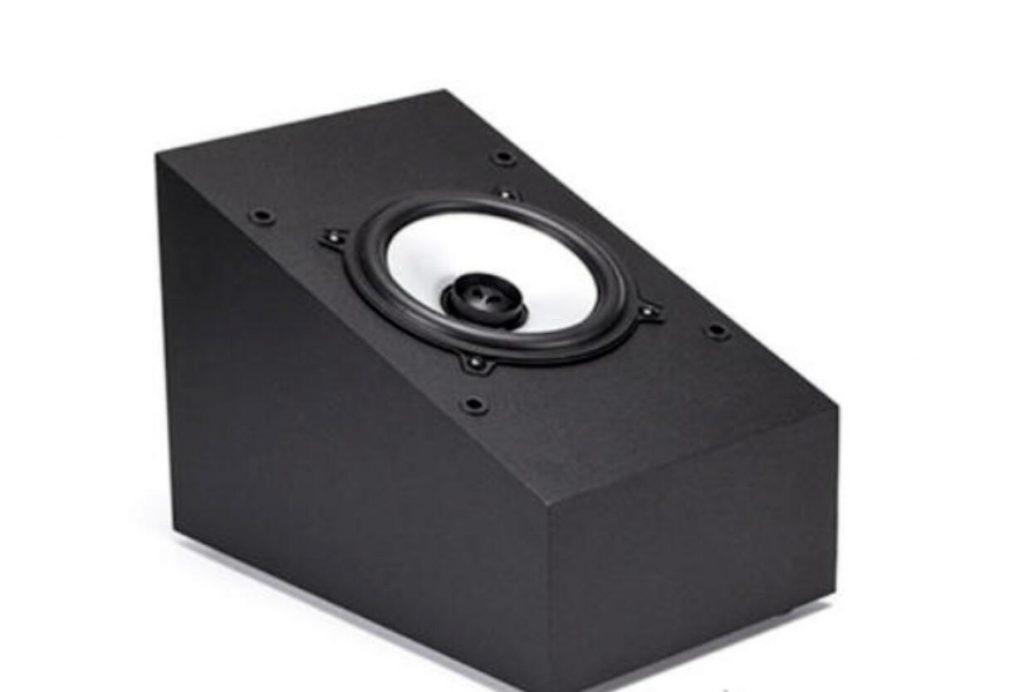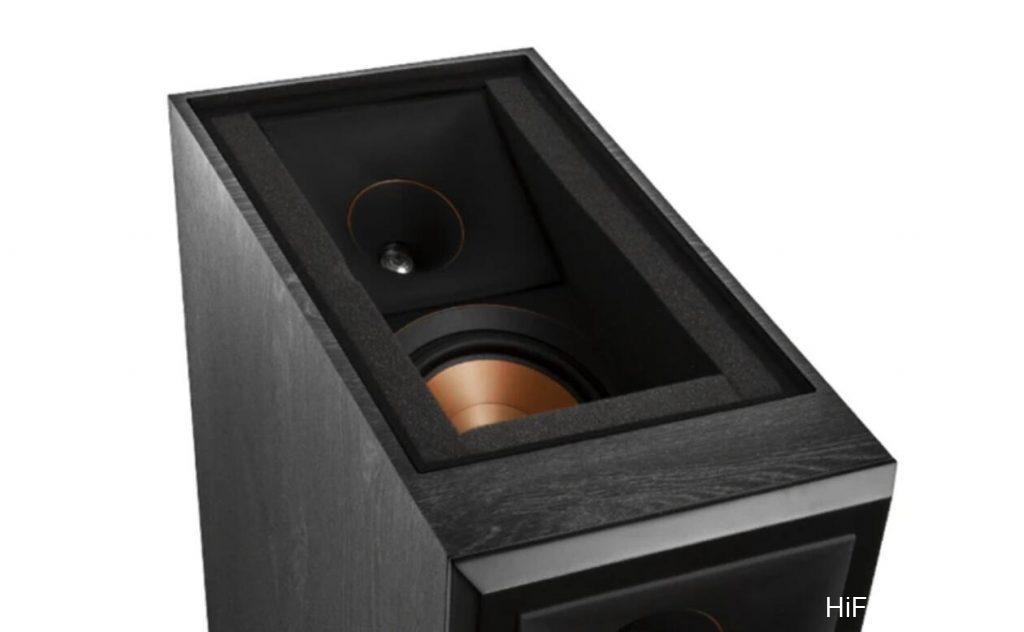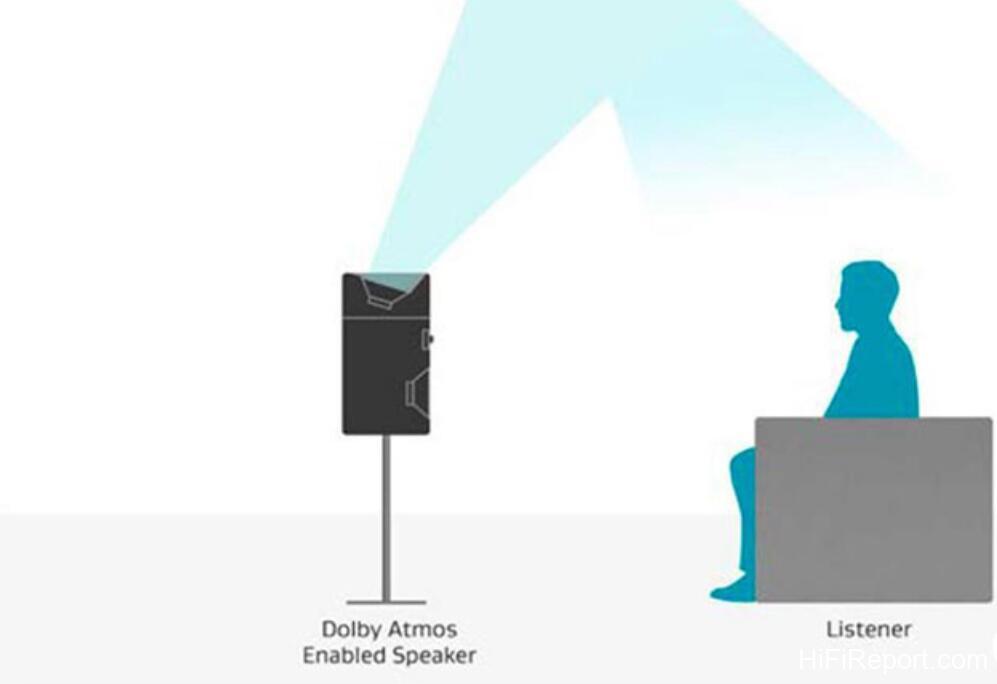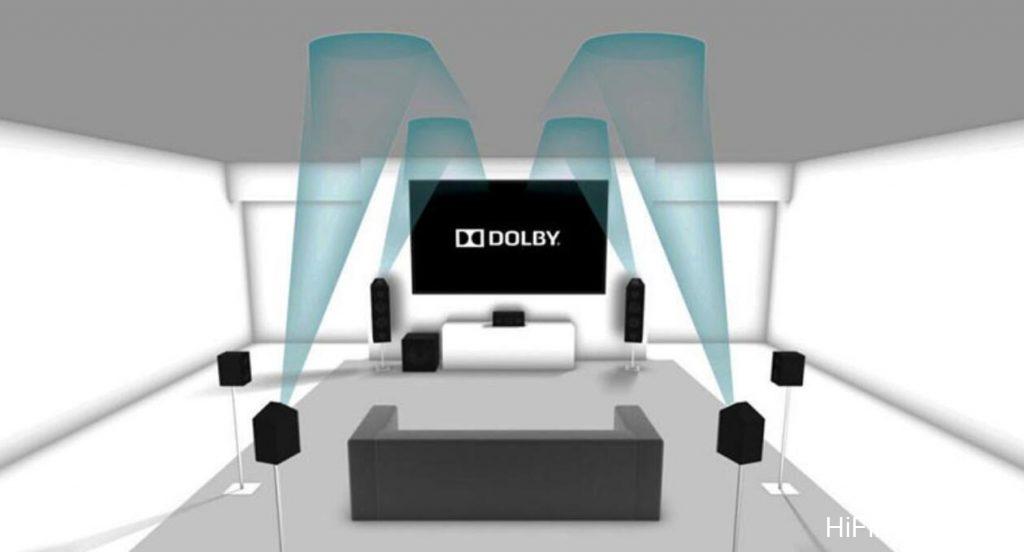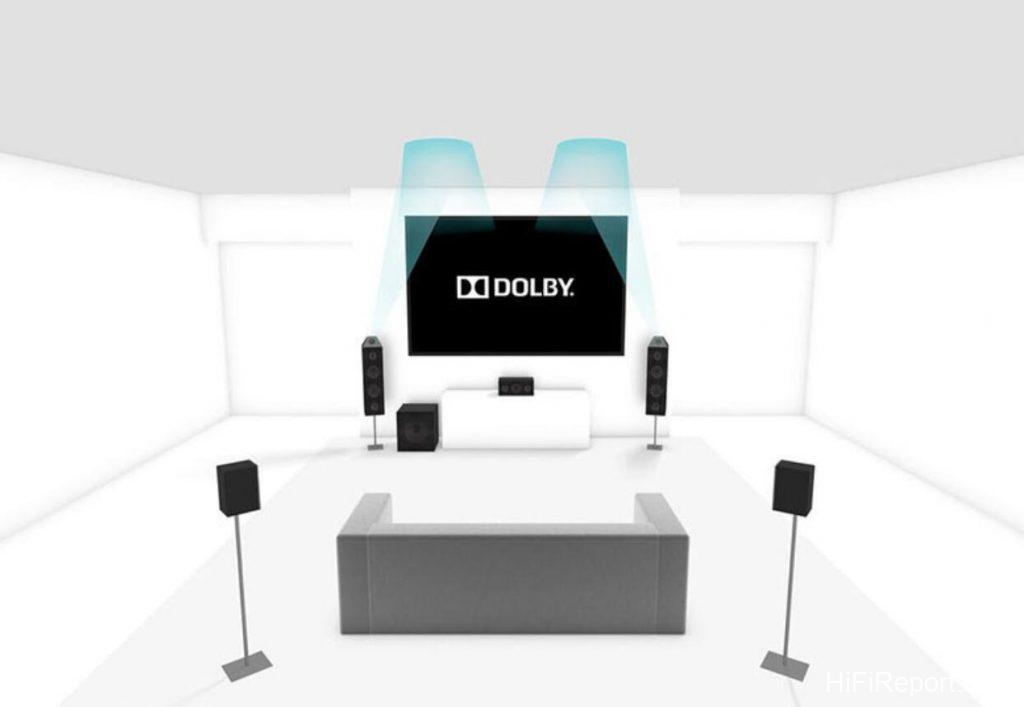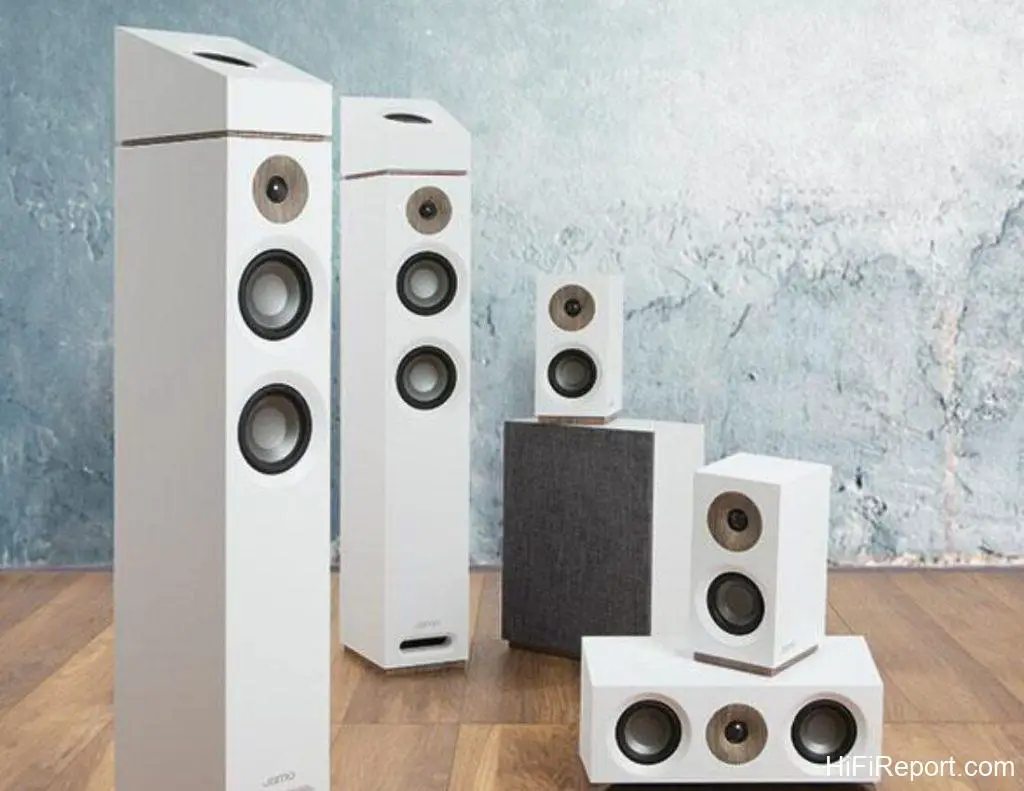What is Dolby Atmos Ceiling Speaker
At the 92nd Academy Awards, the film “1917” won three major awards for Best Cinematography, Best Visual Effects, and Best Sound Mixing. It was one of the must-see movies for fans in 2019-2020. Movies like “1917,” emphasizing sound effects and cinematography, cannot be fully appreciated with a regular TV or computer screen. That’s why I waited until the film was officially released and then rushed to buy tickets to watch it in a Dolby Atmos-equipped theater.
The three-dimensional immersive effect was truly stunning! No wonder many people want to set up a Dolby Atmos sound system in their living rooms. However, going from wanting to do it to giving up may only take five minutes. Assuming that the living room has already been carefully decorated, there are at least the following conditions to consider when installing ceiling speakers:
1. The ceiling should be smooth and flat, with no other decorations or hanging light fixtures.
2. Choose ceiling speakers with an exterior design and size that match the living room’s decor.
3. Plan and arrange the wiring to install and connect the ceiling speakers.
4. Due to the potential risks of making holes in the walls or ceiling for speaker installation, you’ll need to obtain the consent of your family members.
Experienced individuals know that these four conditions while appearing simple, can be challenging to fulfill. However, one should always have dreams, right? Do you have to be constrained by ceiling speakers when building a surround sound system in your living room? Of course not. If you are familiar with Dolby Atmos Ceiling Speakers, you’ll realize that most of these difficulties can be overcome.
Dolby Atmos Ceiling Speakers are a concept that has been introduced previously. In 2014, Dolby detailed these speakers’ structure and installation guidelines in their white paper on Dolby Atmos technology. In other words, they are an integral part of the Dolby Atmos technology ecosystem and have received official certification.
Structurally, Dolby Atmos Ceiling Speakers can be divided into two main categories. One type is integrated speakers, which have front-facing high, mid, and low-frequency drivers and overhead sound field units within the traditional speaker enclosure. The speaker terminals are divided into two sets, one for the front and one for the overhead channels.
The other type is standalone overhead sound field speaker modules, which only contain overhead sound field drivers and can be connected to regular speakers to create a Dolby Atmos system. Pairing these modules with speakers from the same brand is recommended to ensure consistent sound quality across the entire system.
Regardless of which type of Dolby Atmos Ceiling Speaker you choose, they can be mounted on the ceiling without being mounted on the ceiling. They only need to be positioned at a height of around one meter above the floor, utilizing sound reflection from the ceiling to create an effect similar to traditional ceiling speakers.
So, the question arises: How effective are these speakers in practice? Some people may instinctively think that relying on sound reflection can’t match the performance of physically mounted ceiling speakers. However, the answer needs to be more absolute and straightforward.
Dolby’s white paper believes that Dolby Atmos Ceiling Speakers can create a more diffuse and realistic overhead sound field experience, especially in environments with lower ceiling heights. Additionally, ceiling-mounted speakers might be too close to the listener, making it easy to hear and focus on each speaker’s output rather than immersing oneself in the overall overhead sound field. This can affect the overall sense of surround sound.
Therefore, in such environments, choosing Dolby Atmos Ceiling Speakers can be a better solution, a viewpoint supported by professional mixers and experts in the field.
If you decide to go with Dolby Atmos Ceiling Speakers, Dolby recommends using four for optimal performance. Two should be placed at the positions of the front left and right channel speakers, while the other two should be positioned at the locations of the rear surround speakers. If you can only use two Dolby Atmos Ceiling Speaker modules, placing them at the positions of the front left and right channel speakers is advised. It’s important to note that Dolby Atmos Ceiling Speakers must be installed in pairs, both in the front and rear of the room.
When positioning these speakers, their height should be slightly above ear level when seated but should not exceed halfway up the wall. The horizontal distance from the listening position should be around 0.9 meters, preferably over 1.5 meters. If the height of the Dolby Atmos Ceiling Speakers exceeds the listener’s head height, consider placing them at a closer distance. Dolby Atmos Ceiling Speakers should be located above the main speakers and surround speakers less than 0.9 meters above them, oriented horizontally with the drivers facing the ceiling.
It’s important to note that not every ceiling is suitable for Dolby Atmos Ceiling Speakers, and certain conditions must be met. Firstly, the ceiling should be smooth without beams or curves, with a height of up to 4.27 meters, and made of acoustic reflective materials such as drywall, plastic, screens, or other rigid materials. It should not have sound-absorbing materials. Secondly, the ideal ceiling height should be between 2.44 to 3.66 meters. The surrounding walls and floors should also be treated with sound-absorbing or diffusive materials to address unnecessary sound reflections and improve overall sound quality.
To ensure that Dolby Atmos Ceiling Speakers achieve the desired effect, Dolby has specified the angle of reflection, directionality, frequency response, and other performance characteristics of Dolby Atmos Ceiling Speakers in their white paper. This ensures that most of the speaker’s sound energy is directed toward the ceiling, creating the illusion of sound from above for the listener. Dolby advises users to choose experienced and reputable brands and products when purchasing Dolby Atmos Ceiling Speakers.
Let’s take the example of the Danish brand Jamo’s S807 5.1.2 speaker system to see how you can use Dolby Atmos Ceiling Speaker modules to create a home theater with immersive sound in your living room.
This system features the Jamo S807 floor-standing speakers as the main speakers, the S 83 CEN as the center speaker, two S801 bookshelf speakers for the surround sound, along with the S 8 ATM Dolby Atmos Ceiling Speaker modules and an S 810 Subwoofer, forming a 5.1.2 surround sound speaker system. It balances price and performance, making it a popular choice for many.
The key component of this setup is the S 8 ATM Dolby Atmos Ceiling Speaker module. When installing it, align the metal feet of the S 8 ATM speaker with the metal holes on top of the S807 speakers, and there’s no need for additional audio cables. The S 8 ATM speaker has no visible interfaces, making it seamlessly integrated with the S807 floor-standing speakers.
This approach is more elegant and visually appealing than traditional ceiling speaker installation methods. It also eliminates the hassle of running wires to the ceiling, simplifying the wiring process. The clean and compact design of the speakers, which is a hallmark of the S8 series, allows them to blend into various interior design styles effortlessly. This setup is perfect for those who want to avoid traditional ceiling speakers while desiring to create a home theater with immersive sound.
Dolby Atmos Ceiling Speaker Q&A
Can I use in-ceiling speakers for Dolby Atmos?
Yes, you can use in-ceiling speakers for Dolby Atmos audio setups. In-ceiling speakers are popular for creating overhead sound effects in a Dolby Atmos system. They are designed to be installed in the ceiling and can provide a more seamless and integrated appearance compared to external ceiling speaker modules.
To set up a Dolby Atmos system with in-ceiling speakers, you’ll typically need to install a pair of in-ceiling speakers above the listening area, aligned with the main front left and right speakers. These speakers deliver the height or overhead sound in Dolby Atmos content.
Here are some key considerations when using in-ceiling speakers for Dolby Atmos:
1. **Speaker Placement**: Place the in-ceiling speakers directly above the primary listening positions for the best effect. They should be positioned slightly in front of and slightly to the sides of the main front speakers.
2. **Wiring**: Ensure you have the wiring in place to connect the in-ceiling speakers to your AV receiver or Dolby Atmos-compatible amplifier.
3. **Speaker Calibration**: Use your AV receiver’s calibration and setup tools to configure the in-ceiling speakers for optimal sound performance and to ensure they are correctly integrated into the Dolby Atmos system.
4. **Speaker Compatibility**: Make sure the in-ceiling speakers you choose are Dolby Atmos compatible and designed for this purpose. They should have the capability to reproduce height information accurately.
5. **Room Acoustics**: Consider the room’s acoustics, as they can significantly impact the performance of in-ceiling speakers. Proper acoustic treatment, such as addressing reflections and absorptions, can enhance sound quality.
In-ceiling speakers provide a clean and discreet way to implement Dolby Atmos sound in your home theater or audio setup, creating an immersive and three-dimensional experience.
Does Dolby Atmos work with high ceilings?
Dolby Atmos can work with high ceilings, but it’s important to understand how room acoustics and speaker placement affect overall performance and experience.
In a room with high ceilings, there are some considerations to keep in mind:
1. **Height Effect**: Dolby Atmos relies on the placement of speakers that can reproduce overhead or height information. It may be more challenging for the overhead speakers to create a convincing height effect in a room with a high ceiling, as sound has more vertical space to travel before reaching the listener’s ears. However, this can be mitigated by using appropriately positioned speakers.
2. **Speaker Placement**: To optimize Dolby Atmos in a room with high ceilings, consider using in-ceiling speakers designed for overhead sound reproduction. Place these speakers closer to the listening area, ideally directly above or slightly in front of and to the sides of the main front speakers. This can create a more immersive experience despite the high ceiling.
3. **Acoustic Considerations**: High ceilings can introduce additional acoustic challenges, such as increased sound reflections and potential sound dispersion. To address these challenges, consider incorporating acoustic treatments like sound-absorbing materials or diffusers to improve the overall sound quality.
4. **Calibration**: Proper calibration of your Dolby Atmos system is crucial. Use the calibration and setup tools provided by your AV receiver or processor to ensure the speakers are correctly configured for the room’s acoustics and the listener’s position.
5. **Speaker Choice**: Select Dolby Atmos speakers suitable for your room’s dimensions and acoustic characteristics. Some speakers are designed to work better in rooms with high ceilings, offering more directional sound control.
While Dolby Atmos can work in rooms with high ceilings, it may require careful planning and consideration of room acoustics, speaker placement, and the choice of appropriate equipment to achieve the best possible immersive audio experience. Consulting with an audio professional or home theater expert can be beneficial when setting up Dolby Atmos in a room with unique characteristics like high ceilings.
How many ceiling speakers are needed for Dolby Atmos?
The number of ceiling speakers needed for a Dolby Atmos setup can vary depending on the specific configuration you want and the immersive experience you aim to achieve. Dolby Atmos can support different speaker layouts, and the most common configurations are:
1. **5.1.2 Dolby Atmos**: This setup includes five traditional surround speakers (front left, front center, front right, surround left, surround right), one subwoofer for low-frequency effects, and two overhead or height speakers. The “2” in 5.1.2 indicates two ceiling or overhead speakers for the height channels.
2. **7.1.2 Dolby Atmos**: In this configuration, you have seven surround speakers (front left, front center, front right, surround left, surround right, rear surround left, rear surround right), one subwoofer, and two overhead or height speakers.
3. **9.1.2 Dolby Atmos**: This setup includes nine surround speakers (front left, front center, front right, surround left, surround right, rear surround left, rear surround right, front height left, front height right), one subwoofer, and two overhead or height speakers.
4. **9.1.4 Dolby Atmos**: For a more immersive experience, you can opt for four overhead or height speakers. In this case, you would have nine surround speakers, one subwoofer, and four overhead speakers.
5. **7.1.4, 9.1.6, or More**: You can add more overhead or height speakers for even greater immersion. The first number in these configurations refers to the number of surround speakers, the “1” indicates one subwoofer, and the second indicates the number of overhead or height speakers.
Remember that the number of ceiling speakers you can install may be limited by your room’s layout, budget, and desire for a specific level of immersion. While having more ceiling speakers can enhance the three-dimensional audio experience, even a 5.1.2 setup can improve audio immersion more than traditional surround sound.
Ultimately, the choice of how many ceiling speakers to use in your Dolby Atmos setup should be based on your room’s size and shape, equipment, and preferences for audio quality and immersion. It’s a good idea to consult a home theater professional for guidance on the best configuration for your specific space and goals.
